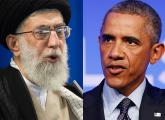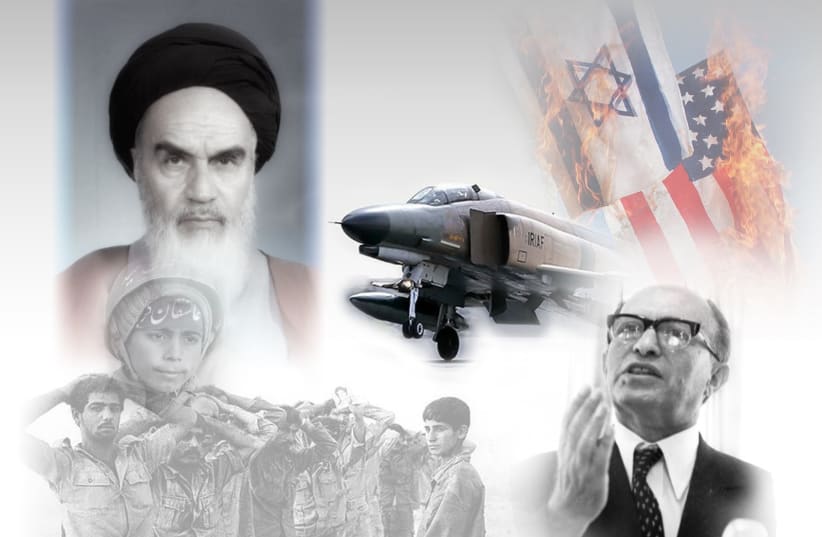US-Iran nuclear negotiations
By ERIC R. MANDEL/J.Post
10/06/2014
http://www.jpost.com/Opinion/US-Iran-nuclear-negotiations-378025
Ayatollah Khamenei believes that Iran has improved its negotiating position relative to the US because of their shared interest in defeating Islamic State (IS).
As the November 24 deadline for a final deal approaches, it is important to be able to decipher what the US administration offers Iran.
Will it be a decisive setback, or a great victory for Iran’s nuclear aspirations? President Barack Obama, Secretary of State John Kerry and chief US negotiator Wendy Sherman have repeatedly said that they will not sign a bad nuclear deal with Iran. If only this were true.
Unfortunately, politics has entered the equation of a decision that is vital to American national security. The clear political goal is to give President Obama a much-needed “win” in Middle East foreign policy, where disastrous choices (which he controlled) and events (at least some of which he did not control) have created a Middle East that threatens American national security more today than in 2009, when the president began his outreach to the Muslim world.
During my recent meetings with advisors close to Prime Minister Binyamin Netanyahu, everyone reminded me that Iran is still Israel’s main existential threat. But this is not just Israel’s problem.
Eric Edelman, Dennis Ross and Ray Takeyh from the Center for Strategic and Budgetary Assessments, The Washington Institute and Council and Foreign Relations respectively, agree. They opined in The Washington Post: “The war on terrorism should not be allowed to conceal the fact that the theocratic Iranian regime and its attempt to upend the regional order remains the United States’ most consequential long-term challenge in the Middle East.”
While the administration creatively is trying to ensure that Iran is significantly delayed in its quest for nuclear weapons, Iranian hegemonic aspirations depend on being perceived as a threshold nuclear power that can realize its nuclear program at any time.
Ayatollah Khamenei believes that Iran has improved its negotiating position relative to the US because of their shared interest in defeating Islamic State (IS).
He perceives Secretary of State Kerry’s repeated outreach to Iran for help in defeating IS as a weakness he can leverage to soften American demands.
To gain insight into the negotiations, I spoke to Mark Dubowitz, executive director of the Foundation for the Defense of Democracies. He confirmed that the US negotiating position has been eroded over the past year. We have gone from “dismantling and disclosing, to disconnecting and deferring,” he said. Last year, the US proposal was to “stop 20 percent enrichment, ship nuclear material out, and shut key facilities” like Fordow and Arak. We also were insisting that Iran come clean on its past weaponization activities, said Dubowitz. “Now we are proposing only technical fixes” without shutting down these nuclear facilities and deferring the resolution of the possible military dimensions of Iran’s program until after a deal is signed.
Ray Takeyh, a Middle East scholar, former United States Department of State official and a Senior Fellow at the Council on Foreign Relations, told me he was more concerned with perpetual negotiations. “I don’t see the P5+1 or the Iranians walking away from the negotiating table,” he said, adding that the administration had an interest in diplomacy given that it had so many other crises in the region.
As the November 24 deadline approaches, here is a short primer to decode the rhetoric of the American-Iranian nuclear negotiations: 1. Is there any “safe” level of uranium enrichment for Iran? Ideally, Iran should have no enrichment or reprocessing capabilities, and therefore pose no risk of breakout. Some experts say that Iran’s breakout time should be at least 12 months to allow enough time not only for detection but also for international debate and response.
2. Did Iran ever have a right to enrich uranium? Until the Joint Plan of Action (Interim Plan), Iran had no right to enrich.
In fact, enrichment totally contradicted all relevant UN Security Council resolutions from 2003-2009, which clearly called for a freeze of enrichment. No nation – let alone the world’s leading state sponsor of terror – has an inalienable right to enrich.
3. How many centrifuges does Iran have now? Iran has 9,000 active centrifuges, and another 10,000 that are installed but not operating.
4. How has the US position changed on the number of centrifuges? Until the Joint Plan of Action, the US followed the Security Council and demanded that Iran have no centrifuges. Then, the US offered no more than 1000 IR-1 (oldest and slowest) centrifuges. Iran balked and the US raised the number to 6,000. Iran refused again.
5. What is SWU and why is it so important to understand? SWU’s (Separative Work Units) are a “creative” way to bypass Iran’s objection to counting its centrifuges. It is a Trojan horse that makes a future Iranian breakout nearly unstoppable. According to Robert Joseph, former undersecretary of state for arms control and international security, “using SWU as a substitute for limiting the number of centrifuges is nothing more than sleight of hand.” If SWU is in a final deal, it will be a strong indication that Iran has won the negotiation.
6. What is the Sunset Provision? The JPOA (interim agreement) said that in a final deal all nuclear-related constraints would expire (sunset) at some unspecified date. At that point, even if Iran is the world’s leading human rights abuser, all safeguards would disappear and Iran would be treated no differently than Holland or England.
7. What is an appropriate duration for a nuclear treaty with Iran? An agreement of indefinite duration would be ideal. However, a term of at least 20 years is possible. It took international inspectors roughly 17 years to give a very cooperative South Africa a clean bill of nuclear health after South Africa admitted that it possessed a nuclear weapons program in 1993. In contrast, Iran isn’t cooperative; it won’t even admit that it has a nuclear weapons program. So, it’s likely going to take far longer than 20 years to issue Iran a clean bill of nuclear health.
8. Why are “creative” solutions a bad idea? “Creative” solutions may conceal an unwillingness to confront Iran on dismantling uranium enrichment centrifuges or the plutonium-producing heavy water reactor at Arak. “Creative” solutions may impose only very minor technical hurdles on Iran’s nuclear capabilities, and allow the West to call it a significant “win.”
9. What other “creative” solutions is the administration proposing? The administration is considering disconnecting centrifuges, rather than limiting the number of centrifuges. But as David Albright and Olli Heinonen, two leading nuclear experts, have said, “The simplest disconnection can be restored in days.”
10. How has Iran been able to improve its output of uranium during the JPOA without increasing the number of centrifuges in use? “Routine maintenance” of existing centrifuges has improved efficiency as much as 25 percent.
11. Are there any shortcuts or creative approaches to pursue other than limiting the number of centrifuges and breakout capacity? No. The congressional authors of US-led international sanctions intended for Iran not only to come into full compliance with all UN Security Council resolutions by halting uranium enrichment, but also to dismantle its illicit nuclear infrastructure.
12. Is there a need for the Arak plutonium reactor in a final deal? No. While a light water reactor (LWR), poses less of a danger than a heavy water reactor (HWR), it is nonetheless possible to produce plutonium with an LWR.
13. What is Iran working on now? In violation of the JPOA, Iran has conducted R&D on a new generation of centrifuges (the IR-8), which it now plans to install. “Manufacturing and production of new centrifuges is our right,” said Iranian atomic energy chief Ali Akbar Salehi.
14. What is left unanswered? Reactors under construction like the one in Arak, any controls on Iran’s missile delivery system, and transparency on previously clandestine nuclear activity.
15. How to know that a bad agreement has been reached? If an agreement limits SWUs instead of centrifuges, you can be assured that Iran will be a nuclear weapons power at a time of its choosing.
The writer, an MD, is founder and director of MEPIN, the Middle East Political and Information Network.




















